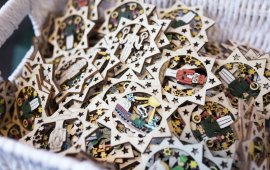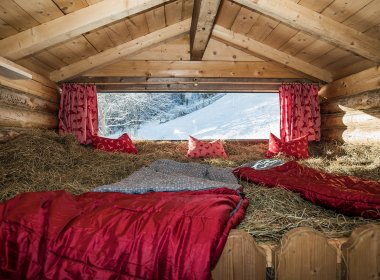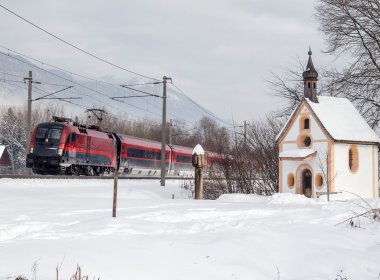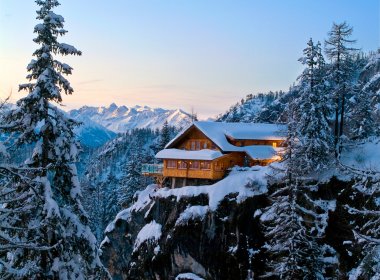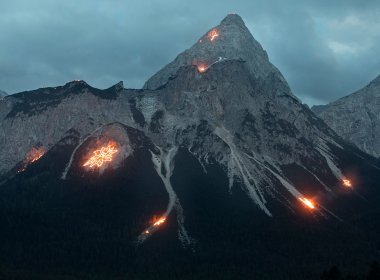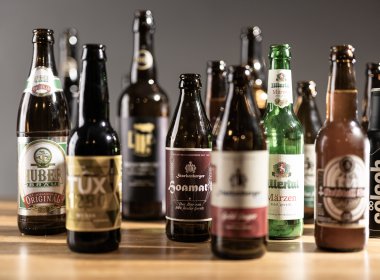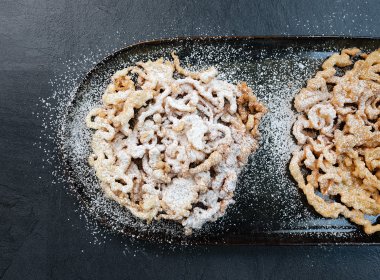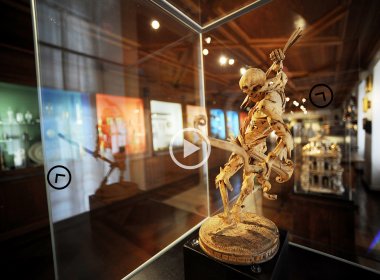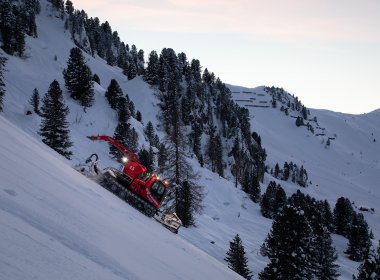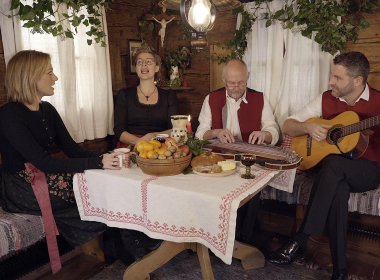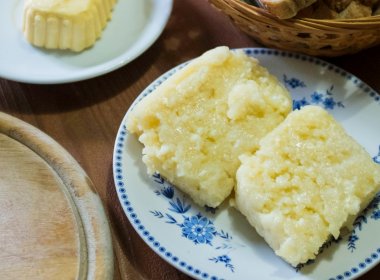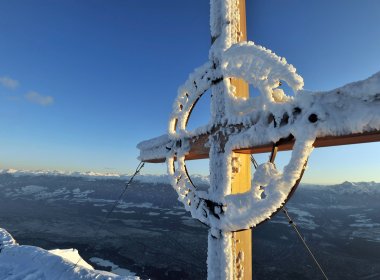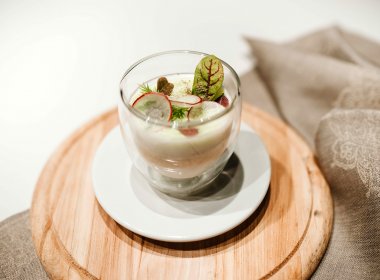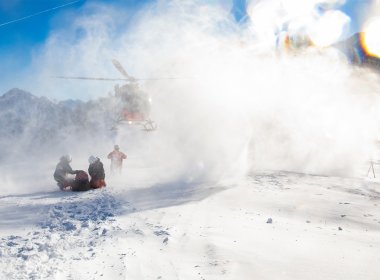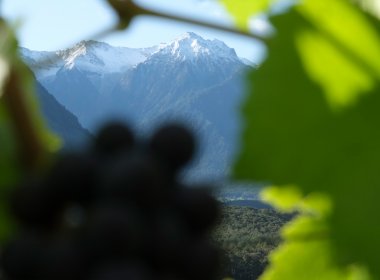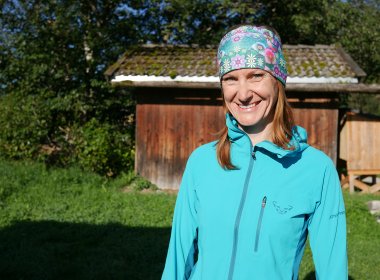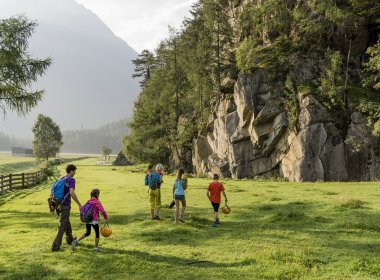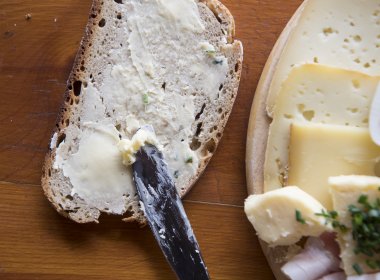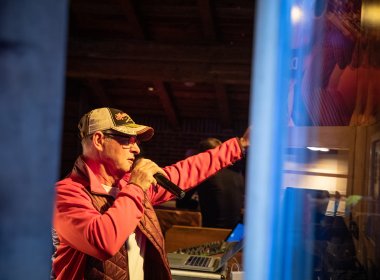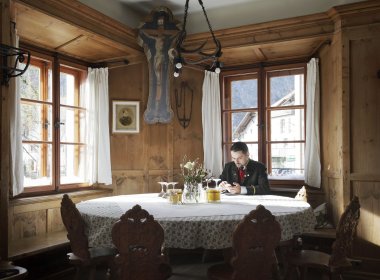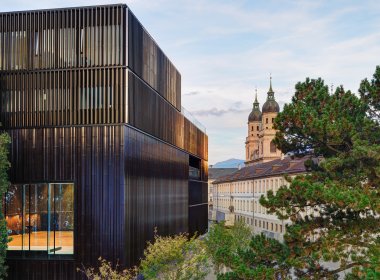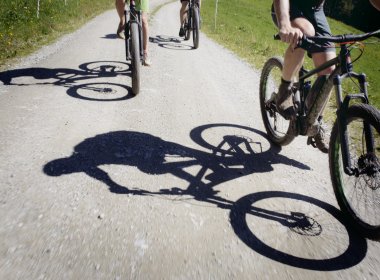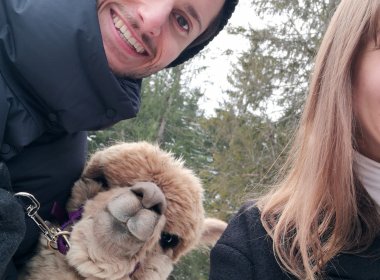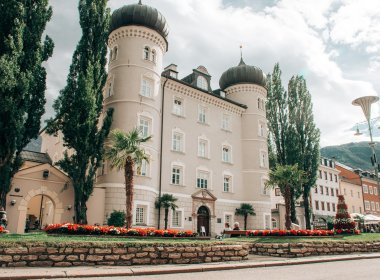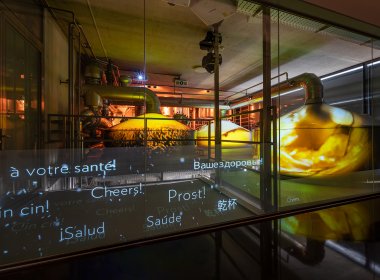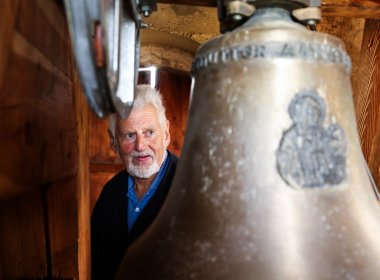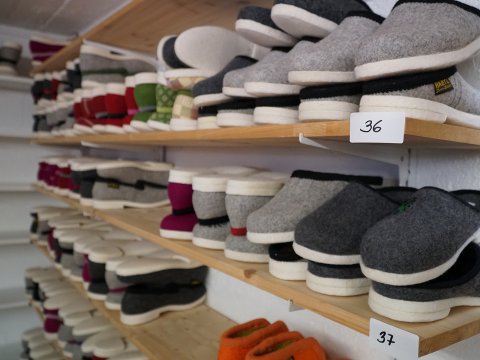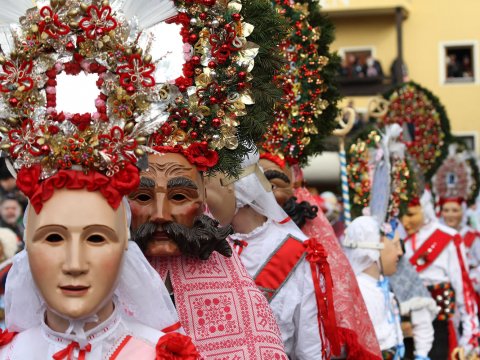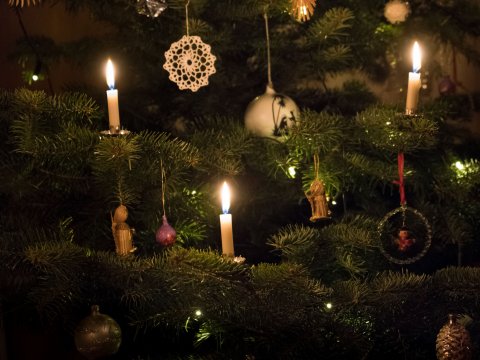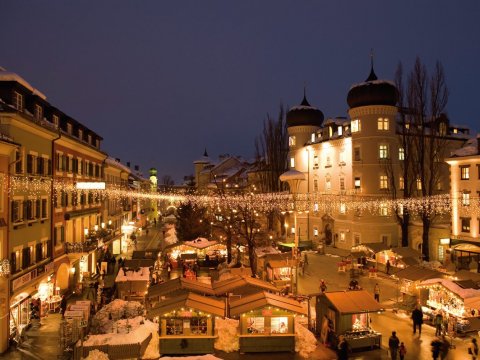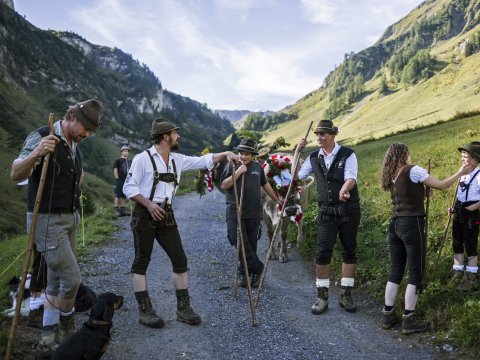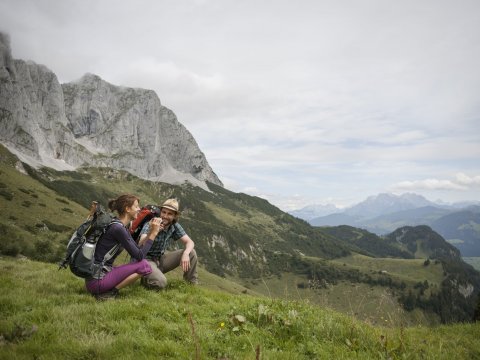“Teufel”, “Krampusse” and “Perchten“ in Tirol
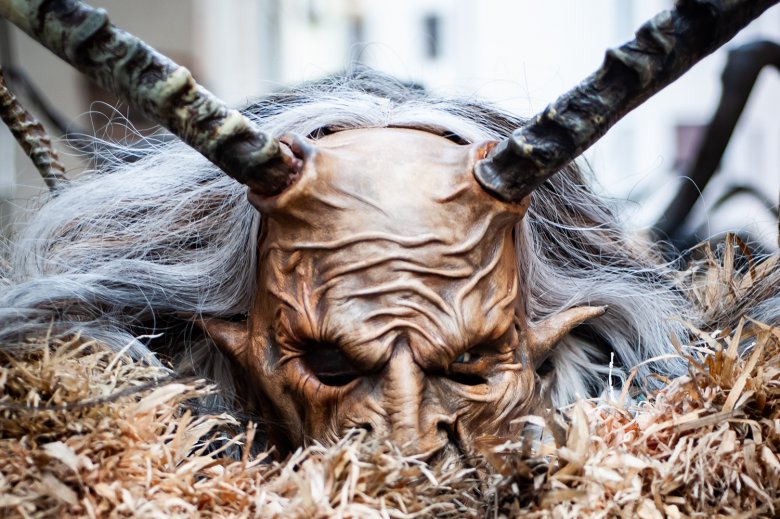
Winter in Tirol begins with bells, banging and bizarre beings roaming the streets. Every year at the start of December, the devilish “Krampus” strikes fear into the heart of children. This centuries-old tradition is today more popular than ever.
DONG DONG DONG DONG DONG … the sound of heavy metal bells echoes through the villages around Rattenberg each year on 6 December, known as Saint Nicholas Day. “Watch out,” children whisper to each other, “Krampus is about!” It is on this day that these devil-like beings, known in this part of Tirol as “Peaschtl”, roam the region striking fear into the heart of youngsters. “Krampus” is a horned figure often described as “half-goat, half-demon” who, during the Christmas season, punishes children who have misbehaved, while the friendly Saint Nicholas rewards the well-behaved with gifts. The arrival of Krampus (plural: Krampusse) traditionally marks the start of winter in Tirol. While schoolchildren await his advent with trepidation, adults remember their own Krampus experience as children and look forward to the procession in the evening as the village’s Krampusse march through the streets banging old petrol canisters with wooden clubs.

Video Credits: Alex Lutz/Perchtenpass Reith & David Knörnschild/Seidä Pass
So what’s behind this devilish tradition? “The origins are complex,” explains Karl Berger, an expert on local customs and director of the Museum of Tyrolean Regional Heritage in Innsbruck. “On the one hand, Krampus is the fearsome companion of Saint Nicholas and formed a central part of the Saint Nicholas Games introduced by the Jesuits during the Counterreformation. Krampus had an educational function – his appearance was designed to make people see the error of their ways and return to the correct, Catholic path.”
The figure also ties in to the legendary alpine figure of the “Perchta”, which itself is linked to the Epiphany of Christ. First mentioned in the Late Middle Ages, the Perchta and its legends have both Christian and non-Christian elements. In the nights between 25 December and 6 January many customs were practised that involved people wearing masks and dressing up. It was therefore a once-in-a-year opportunity for those involved to behave badly without being punished, for example by stealing food or drinking to excess. “At some point over the years,” says Berger, “the figure of Krampus probably became integrated into the Perchta customs.”
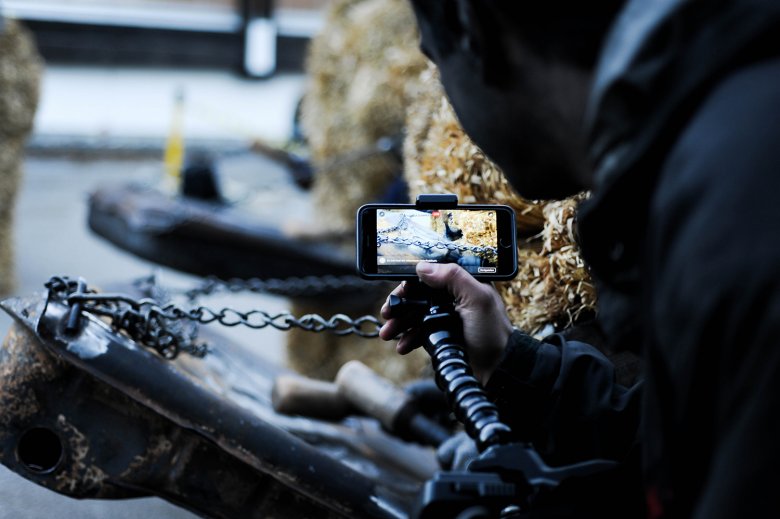
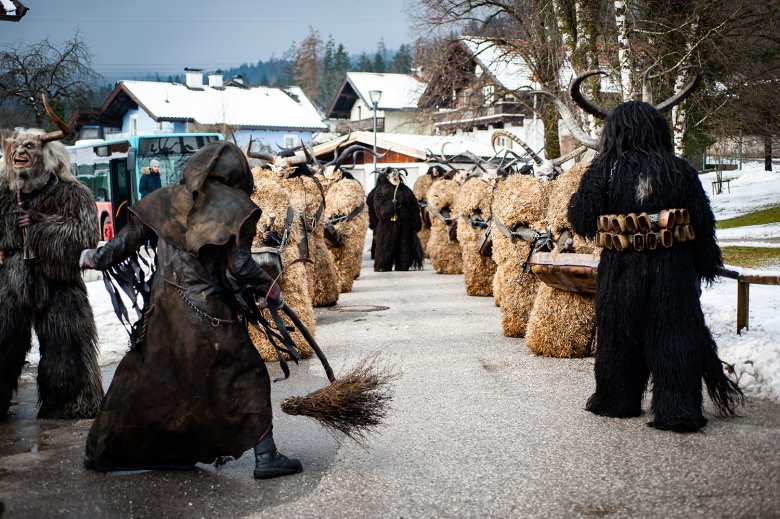
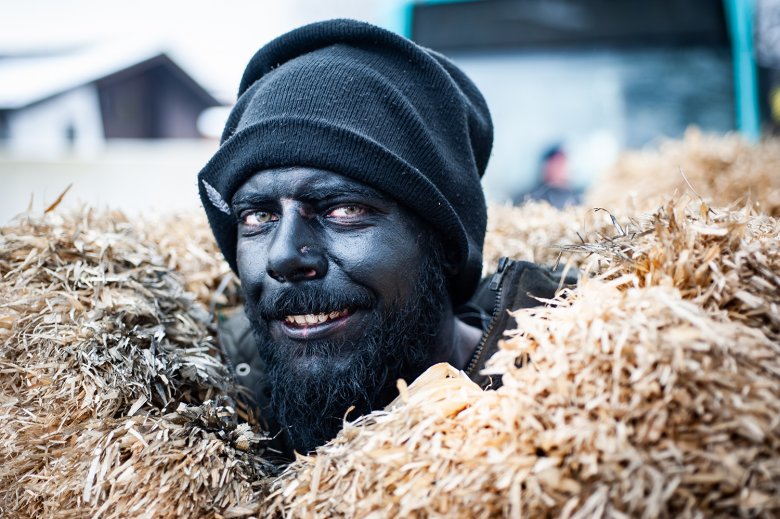
Driving away evil spirits
“We drive away the evil spirits of winter,” explains Martin Knapp. Each community has its own Krampusverein (Krampus club) responsible for organising the annual festivities. He has been a member of the Seidä Pass club in Kramsach for ten years, where he takes on the drumming role of the “Tamperer”. Most members of Krampus clubs throughout Tirol are young men, who invest a lot of time and effort into their hobby. The heavy costumes are painstakingly sewn together by hand, while the hand-carved masks known as “Larven” can cost up to €1000.
For two days in December the men adopt the role of the “Peaschtl”. “Each year once those two days are over I need a few days off work and head to the sauna to relax,” laughs Martin Knapp. Unlike in many other regions, the “Teufeltag” (Devil’s Day) in Kramsach is a peaceful affair. “Visitors have soot rubbed onto their faces, but it is mostly about the drumming – and, of course, the witch’s dance.” Each year the Seidä Pass club expands and perfects its already impressive repertoire of rhythms.
Krampus
“Krampus” is a figure which appears in alpine countries the run-up to Christmas and traditionally accompanies Saint Nicholas. In some regions, the figure of Krampus has merged with that of the “Percht”. The first Perchten appeared in Tirol in the 17th century, while the earliest mentions of Krampusse (or “Kleibeife” as they are known in East Tirol) date to the Saint Nicholas Games of the 18th century. In fact, it was not until the late 19th century that it became customary to claim that the Perchten drove out the evil spirits of winter. It was around that time that Late Romantics scholars became interested in alpine customs. Today there are still many different celebrations and traditions which vary according to the region. Even within Tirol there are, indeed, different names given to this devilish figure: Teufeln, Perchten, Krampal and Kleibeifen. These days many Krampus processions have a large show element and are an annual attraction popular with young and old.
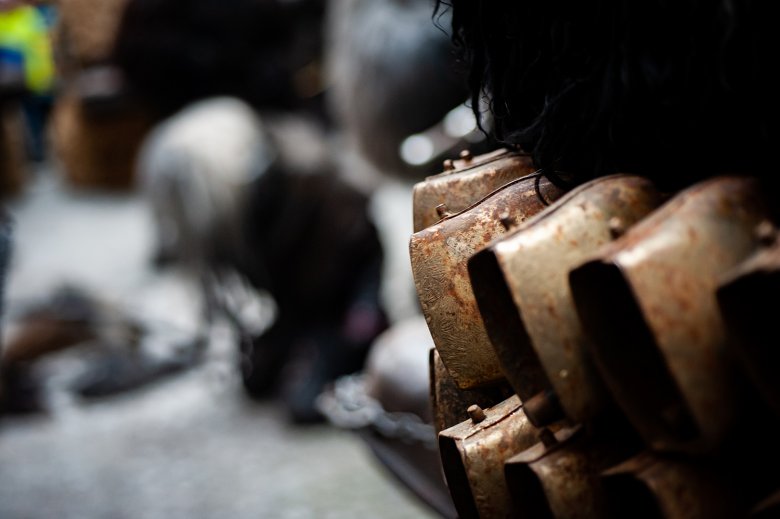
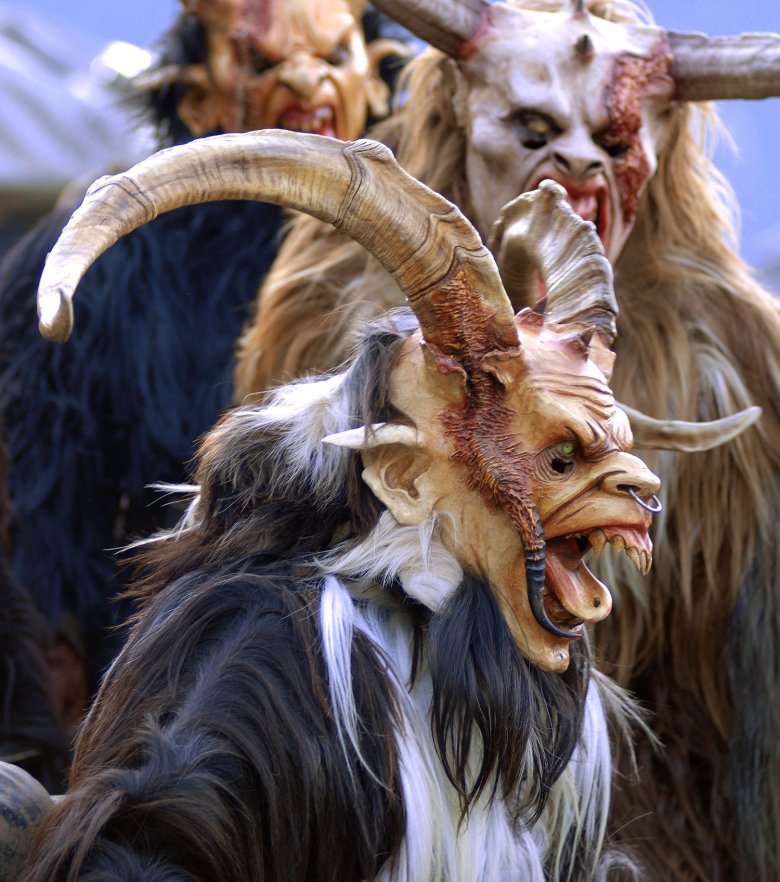
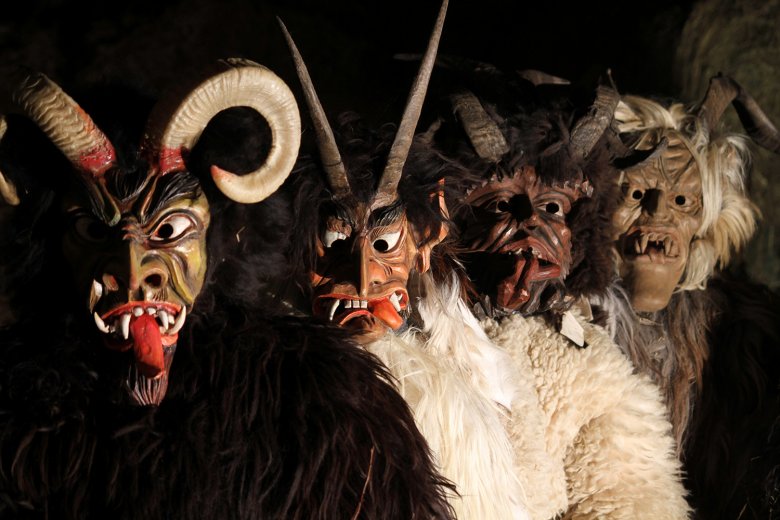
I respect the roots, but I also see a chance to build on them.”
Different villages, different customs
Each village has its own customs and traditions when it comes to the masks, clothing and procession of the Krampusse. In the Tirolean Oberland, the name given to the part of Tirol west of Innsbruck, the “Tuifl” (the dialect word for “devils”) can be found out and about in the streets from as early as the middle of November. In the village of Haiming they traditionally wear red trousers underneath their heavy animal skins. “This tradition comes from the old gingerbread packaging, which always showed a Krampus with red legs,” explains Simon Wegleiter from the local Krampus club.
In the Matrei in East Tirol the Krampusse, known as “Kleibeife”, carry heavy metal bells and wear huge, intricately carved masks to terrify those they meet. The celebrations here are less peaceful than those in Kramsach, with brave young men from the local community taking on the “Kleibeife” in a test of strength. The aim of the devilish beings is to prove their physical superiority by wrestling the young men and throwing them onto their backs. Another spectacular custom in East Tirol is “Tischzoichn” (literally: “table pulling”), which sees local youngsters sit in groups behind a heavy wooden table as they wait for the Krampusse to storm in. Their aim is then to defend the table by preventing the raging Krampusse from turning it over. Attempts to commercialise the customs have been met with strong opposition in Matrei – fireworks, for example, are severely frowned upon.
In North Tirol, on the other hand, smoke and fire have long become part of the annual celebrations. “I respect the roots, says Martin Knapp, “but I also see a chance to build on them and develop them.” At the same time, he explains, there are also more traditional Krampus clubs in his region which do not approve of modern-style masks that seem inspired more by Lord of the Rings than alpine traditions. The village of Breitenbach am Inn is widely considered the cradle of “Peaschtl”, as Krampus is known in this part of Tirol. There, members of the local Krampus club are particularly strict when it comes to traditions and mask design.
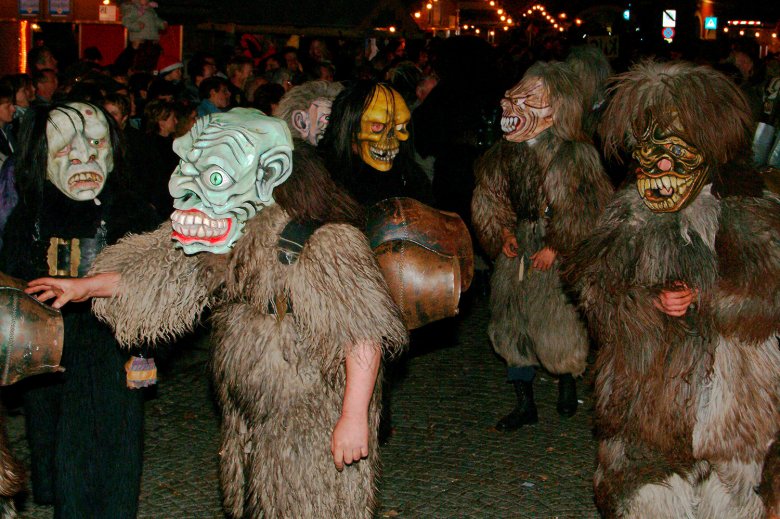
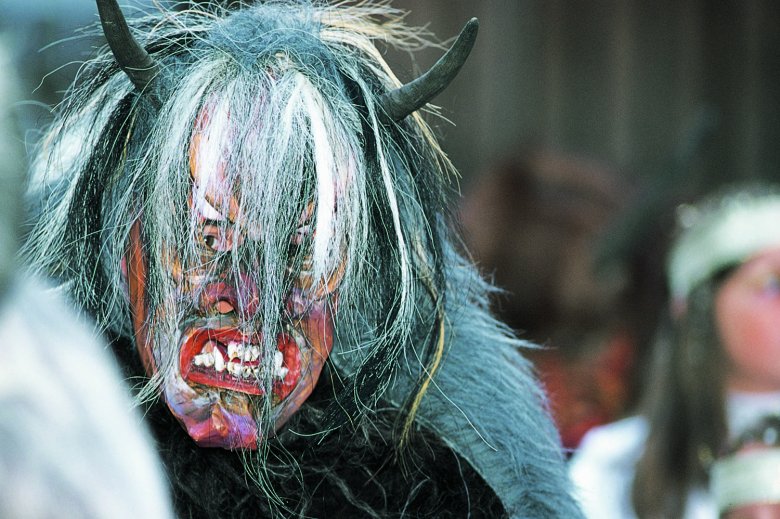
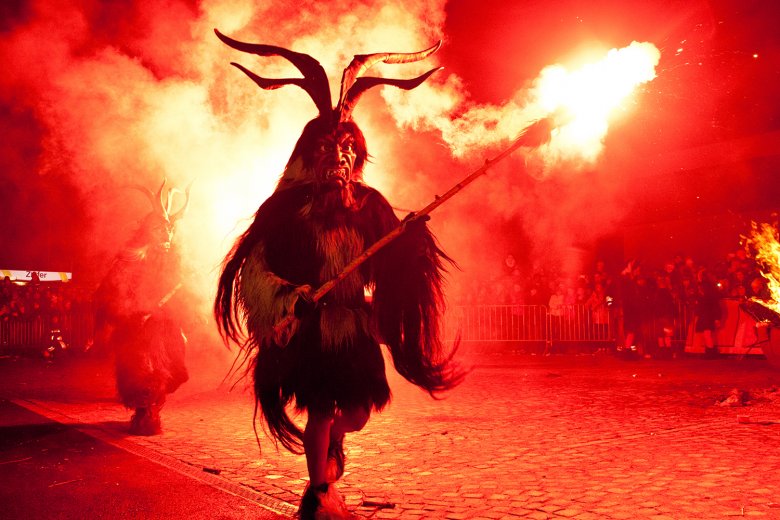
We were extremely surprised by the level of interest.”
For Karl Berger, an expert on local traditions in Tirol, discussions such as these are a reflection of modern times. “Customs occupy a position between tradition and modernity. On the one hand, the Krampus clubs emphasise the regional character of their activities. At the same time, many of them adopt international elements from things like heavy metal culture and films. Social media is also a big aspect for most Krampus clubs,” says Karl Berger.
Martin Knapp agrees. A video showing the arrival of the Seidä Pass Krampus club in Rattenberg has been viewed an incredible eight million times on Facebook. All of a sudden, a centuries-old tradition in the heart of Tirol was getting “Likes” from all over the world. The club was inundated with requests for it to appear at events. One of the most unlikely and surprising enquiries came from Paris Fashion Week, where the Krampusse were invited to appear after a fashion designer saw the video and became interested in the group. “We were extremely surprised by the level of interest, but it is a great chance to make our custom known around the world,” says Martin Knapp. Watch the video here.










